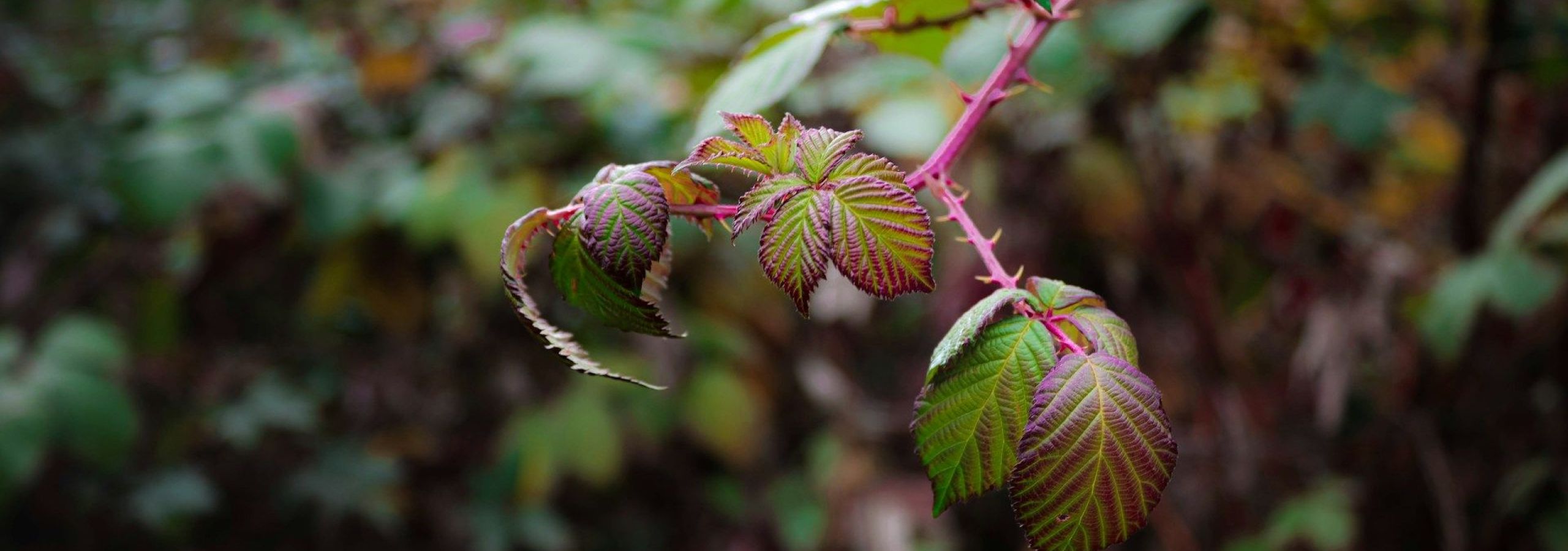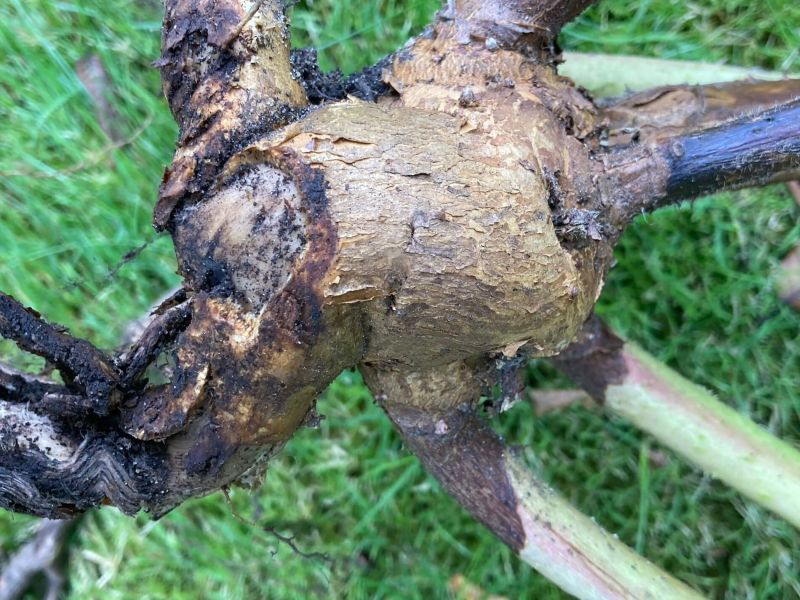Our detailed guide will delve into how brambles can best be eradicated in order to help reclaim outdoor space from this fast-spreading species of plant.
Brambles can quickly become an unwelcome presence in any garden or landscape; they can overwhelm desired plants, create impenetrable thickets and generally become a significant nuisance. While seemingly resilient, brambles can be effectively managed and eradicated with the right approach and a bit of persistence.
Understanding Brambles
It can be helpful to understand how brambles, also known as Rubus, operate as they can spread through several methods:
- Seed dispersal: Birds and other animals eat the berries and deposit seeds elsewhere.
- Tip layering: Where a cane touches the ground, it can root and form a new plant.
- Rhizomes (underground stems): These creeping stems send up new shoots, allowing the plant to spread laterally.
This multi-pronged approach to propagation is why simply cutting back brambles often provides only a temporary reprieve. A comprehensive strategy targets all avenues of growth.
Tools and Techniques
Depending on the scale of the infestation and your preferences, a range of tools and techniques are available for utilisation.
Manual Removal (for smaller infestations)
- Tough Gloves: Essential for protecting your hands. Gauntlet-style gloves offer the best forearm protection.
- Secateurs and Loppers: Sharp, high-quality tools are crucial for cutting through thick canes. Loppers can provide extra leverage for thicker stems.
- Mattock or Grub Axe: Ideal for digging out the tough root systems and rhizomes, especially in established patches.
- Spade or Fork: Useful for loosening soil around the roots before pulling.
- Tarpaulin or Heavy-Duty Bags: For collecting and disposing of the removed brambles.
The Technique:
Cut the bramble canes back to ground level. Then, using either your mattock, spade, or fork, carefully dig around the base of the plant to expose the main root system. Follow the rhizomes outwards and cut them. Lift the entire root ball and as much of the rhizome network as possible. Ensure you get all available material, as any remaining root fragments can regenerate.
Mechanical Removal (for larger infestations)
- Brush Cutters with Blade Attachments: Powerful tools for quickly cutting down large areas of brambles. Use appropriate safety gear, including eye protection, ear defenders, and leg protection.
- Flail Mowers or Rotary Cutters (for vast areas): Tractor-mounted implements designed to shred dense vegetation. This is often employed for land management rather than garden settings.
The Technique:
Operate machinery carefully, ensuring all personnel and obstacles are clear. Cut the brambles as close to the ground as possible. Follow up with manual removal or herbicide application to address regrowth from roots and rhizomes.
Herbicide Application (for persistent or extensive infestations)
- Glyphosate-based herbicides: A systemic herbicide that is absorbed by the leaves and translocated to the roots, effectively killing the entire plant. Ensure to use caution and strictly follow the manufacturer's instructions regarding dilution, application, and safety precautions.
- Triclopyr-based herbicides: Another systemic herbicide effective against woody plants like brambles. Often preferred in situations where glyphosate use is restricted or undesirable.
The Technique:
The best time for herbicide application is when the brambles are actively growing, typically in spring or early summer, or again in late summer/early autumn. Cut back the brambles and allow regrowth of fresh foliage (around 6-12 inches).
Then, carefully apply the herbicide to the actively growing leaves, avoiding spray drift onto desirable plants. Repeat applications may be necessary for established infestations. Always prioritise non-chemical methods where feasible and adhere to local regulations regarding herbicide use.
Tips for Success
- Persistence is Key: Brambles are tenacious, expecting to eradicate them with a single effort would be impossible. Regular follow-up is crucial to deal with regrowth.
- Target the Roots: Only cutting back the canes will encourage more vigorous growth. Focus on removing or killing the root system.
- Timing Matters: Tackle brambles before they become too well-established. Younger plants are generally easier to remove.
- Preventative Measures: Once cleared, maintain the area to prevent re-establishment. This might involve regular mowing, mulching, or planting dense ground cover that can outcompete bramble seedlings.
- Consider the Environment: Be mindful of surrounding plants and wildlife when choosing your removal method. Opt for the least impactful approach whenever possible.
- Proper Disposal: Dispose of bramble cuttings responsibly to prevent them from re-rooting. Burning (where permitted and safe), chipping, or bagging for green waste collection are common methods.
Check out our recent article discussing how brambles can be killed at the root.
When to call professionals like The Gardensmiths?
While you can tackle brambles yourself, there are situations where professional help like ours is highly recommended:
- Large or Severely Established Infestations: We have the equipment and expertise to handle extensive bramble thickets efficiently and safely.
- Difficult Terrain: If the brambles are growing on steep slopes, near water features, or in other challenging locations, professional removal can save you time and potential injury.
- Concerns about Herbicide Use: We are trained in the safe and effective application of herbicides, ensuring minimal risk to the environment and non-target plants.
- You Lack the Time or Physical Capacity: Removing brambles can be physically demanding. Hiring professionals frees up your time and energy.
Here at The Gardensmiths, we are not your average gardeners. We provide specialist garden services, backed by years of experience and the right tools to tackle even the toughest garden challenge that standard maintenance just won’t fix. Our bramble removal service throughout West Sussex and the South East of England will help you regain control of your outdoor garden.
Please feel free to contact us for a quote or any other information.


